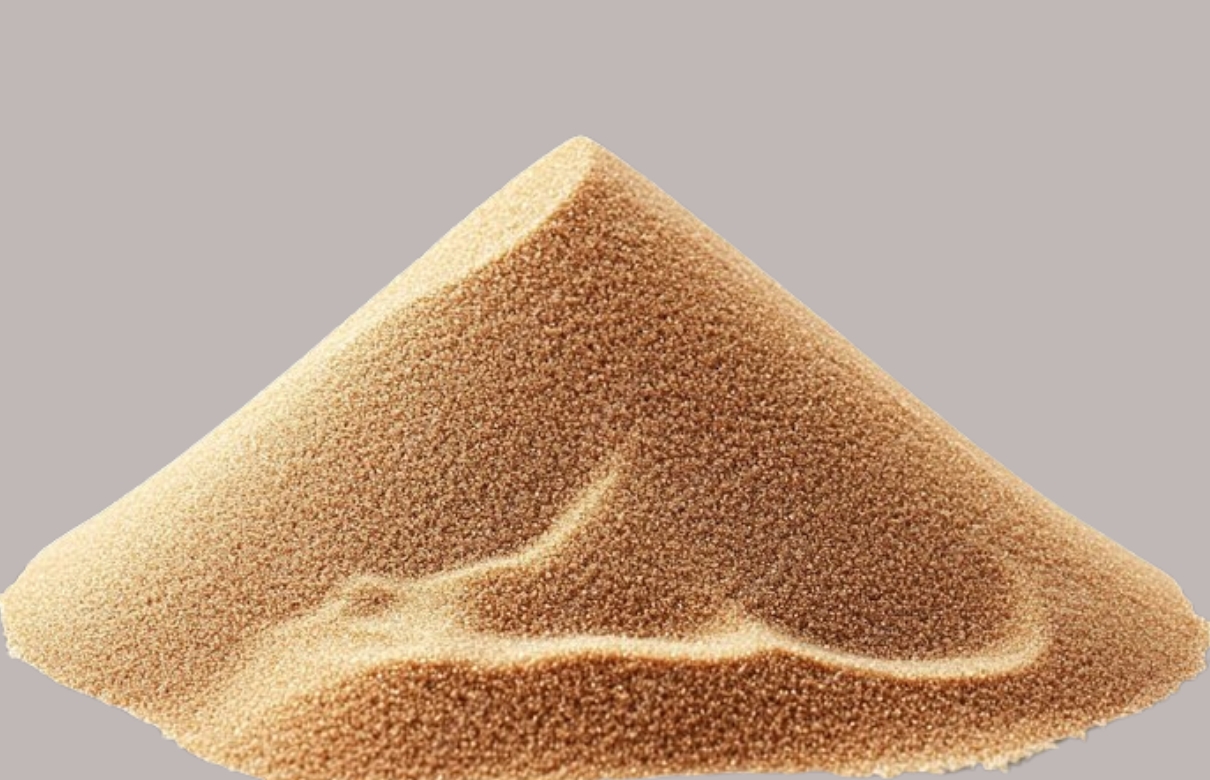

CHEMICAL COMPOSITION
Grade : (Al2o3) 60% Guaranteed
| Al2o3 | 60min. |
| Tio2 | 1.00 max. |
| Fe2o4 | 1.00 max. |
Sillimanite sand, composed mainly of aluminum silicate (Al2O3), is a valuable raw material known for its unique properties. Naturally occurring in metamorphic rocks alongside minerals like quartz and feldspar, sillimanite is utilized across various industrial applications.
With its outstanding thermal stability and a melting point over 1,550°C (2,822°F), sillimanite is extensively used in refractory materials and ceramics. In refractory applications, it is essential for manufacturing high-temperature-resistant products such as alumina bricks, crucibles, and kiln linings, playing a critical role in industries like steelmaking and glassmaking.
Additionally, sillimanite is a key ingredient in the ceramics industry, enhancing the production of ceramic items with excellent thermal shock resistance and dimensional stability. It is particularly valued for making kiln furniture, sanitary ware, and high-performance ceramics.
In foundry casting, sillimanite sand is prized for its thermal stability and resistance to deformation at high temperatures, enabling the creation of precise molds for metal alloy casting—an essential process in various industrial applications.
Globally, significant sillimanite deposits can be found in regions such as India, South Africa, and Australia. These deposits are usually associated with metamorphic rocks and are mined through sea sand surface techniques in India, while underground methods are common in Australia and South Africa.
Although sillimanite is not toxic, responsible mining practices are crucial to minimizing environmental impacts associated with its extraction and processing. Sustainable approaches are necessary to conserve natural resources and protect ecosystems.
In summary, the exceptional properties of sillimanite sand make it indispensable in refractory materials, ceramics, and foundry casting. Its widespread availability and diverse applications highlight its significance, while environmentally conscious mining practices are vital for sustainable utilization.
Uses of Sillimanite Sand
- Refractory Materials
- Ceramics Industry
- Foundry Applications
- Glass Manufacturing
- Metallurgical Applications
- Cement Kilns
- Abrasives
Advantages of Sillimanite Sand
- High Thermal Stability
- Low Thermal Expansion
- Chemical Resistance
- Durability
- High Alumina Content
- Cost-Effective
- Versatile Applications
Applications


Refractories:
Sillimanite is widely utilized in the production of refractory materials because of its high melting point, thermal shock resistance, and outstanding thermal insulation properties. It is commonly used in the manufacturing of furnace linings and high alumina bricks, particularly in the foundry industry.


